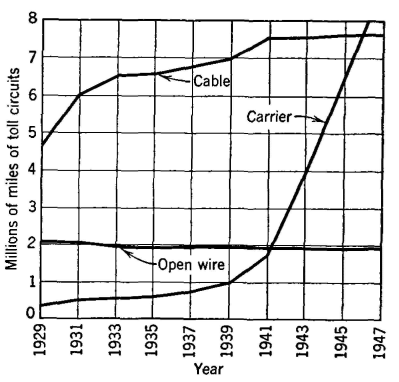| Electrical Communication is a free textbook on the basics of communication technology. See the editorial for more information.... |

|

Home  Telephone Toll Service and Systems Telephone Toll Service and Systems  Types of Carrier Telephone Systems Types of Carrier Telephone Systems |
|||||






|
|||||
Types of Carrier Telephone SystemsSome of the systems that have been devised are listed in Fig. 18. This chart does not include all models of certain systems. The type A and type B systems are no longer used but are of fundamental interest.
The various carrier systems have features in common, yet each has distinguishing characteristics. They provide excellent telephone channels, and their importance in comparison with other facilities is indicated by Fig. 19. The types C, J, and K systems listed in Fig. 18 and the type L system are of most importance and will be considered in greatest detail.
|
|||||
Home  Telephone Toll Service and Systems Telephone Toll Service and Systems  Types of Carrier Telephone Systems Types of Carrier Telephone Systems |
|||||
Last Update: 2011-05-18



